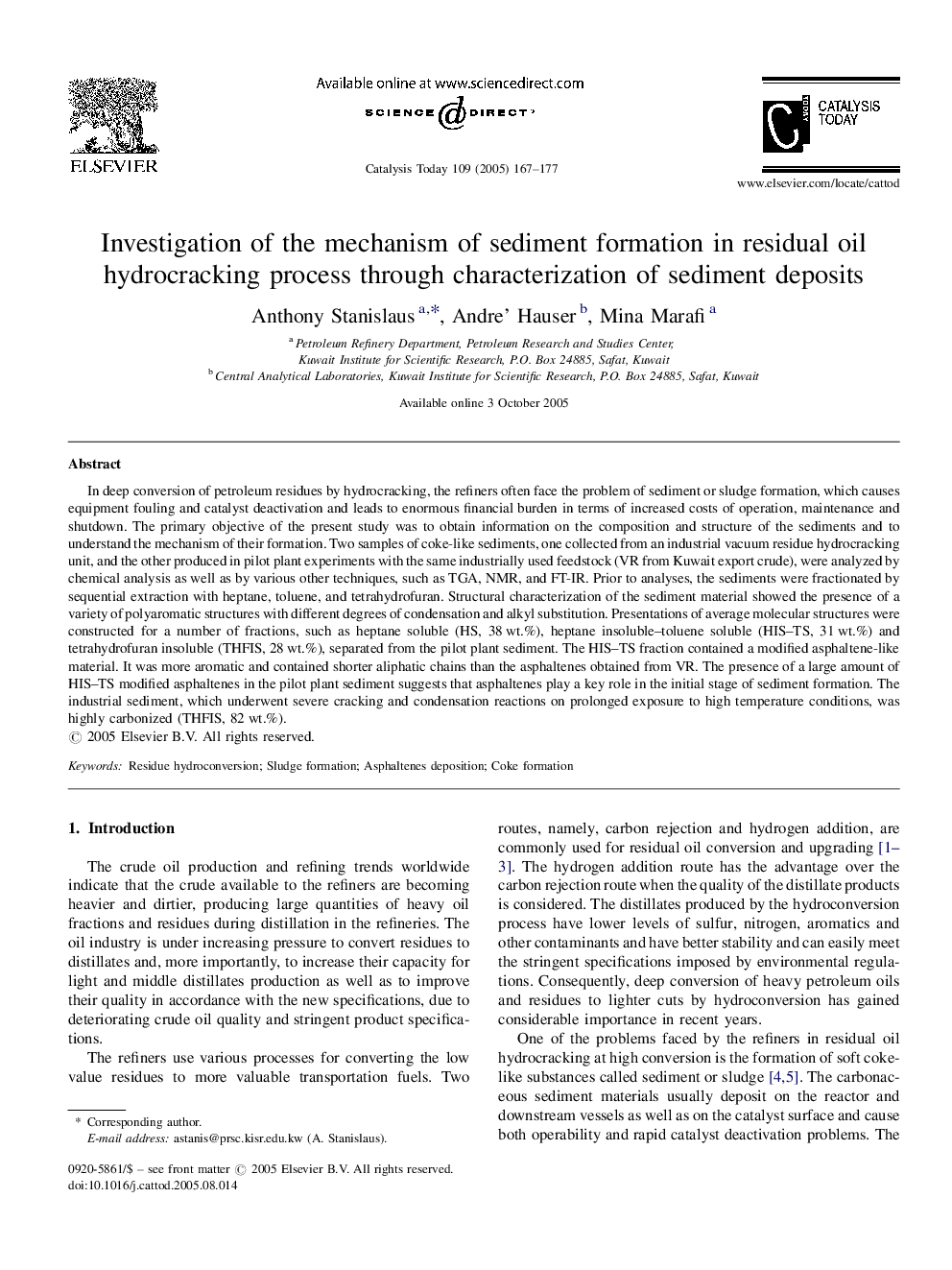| کد مقاله | کد نشریه | سال انتشار | مقاله انگلیسی | نسخه تمام متن |
|---|---|---|---|---|
| 9610151 | 47194 | 2005 | 11 صفحه PDF | دانلود رایگان |
عنوان انگلیسی مقاله ISI
Investigation of the mechanism of sediment formation in residual oil hydrocracking process through characterization of sediment deposits
دانلود مقاله + سفارش ترجمه
دانلود مقاله ISI انگلیسی
رایگان برای ایرانیان
کلمات کلیدی
موضوعات مرتبط
مهندسی و علوم پایه
مهندسی شیمی
کاتالیزور
پیش نمایش صفحه اول مقاله

چکیده انگلیسی
In deep conversion of petroleum residues by hydrocracking, the refiners often face the problem of sediment or sludge formation, which causes equipment fouling and catalyst deactivation and leads to enormous financial burden in terms of increased costs of operation, maintenance and shutdown. The primary objective of the present study was to obtain information on the composition and structure of the sediments and to understand the mechanism of their formation. Two samples of coke-like sediments, one collected from an industrial vacuum residue hydrocracking unit, and the other produced in pilot plant experiments with the same industrially used feedstock (VR from Kuwait export crude), were analyzed by chemical analysis as well as by various other techniques, such as TGA, NMR, and FT-IR. Prior to analyses, the sediments were fractionated by sequential extraction with heptane, toluene, and tetrahydrofuran. Structural characterization of the sediment material showed the presence of a variety of polyaromatic structures with different degrees of condensation and alkyl substitution. Presentations of average molecular structures were constructed for a number of fractions, such as heptane soluble (HS, 38Â wt.%), heptane insoluble-toluene soluble (HIS-TS, 31Â wt.%) and tetrahydrofuran insoluble (THFIS, 28Â wt.%), separated from the pilot plant sediment. The HIS-TS fraction contained a modified asphaltene-like material. It was more aromatic and contained shorter aliphatic chains than the asphaltenes obtained from VR. The presence of a large amount of HIS-TS modified asphaltenes in the pilot plant sediment suggests that asphaltenes play a key role in the initial stage of sediment formation. The industrial sediment, which underwent severe cracking and condensation reactions on prolonged exposure to high temperature conditions, was highly carbonized (THFIS, 82Â wt.%).
ناشر
Database: Elsevier - ScienceDirect (ساینس دایرکت)
Journal: Catalysis Today - Volume 109, Issues 1â4, 30 November 2005, Pages 167-177
Journal: Catalysis Today - Volume 109, Issues 1â4, 30 November 2005, Pages 167-177
نویسندگان
Anthony Stanislaus, Andre' Hauser, Mina Marafi,